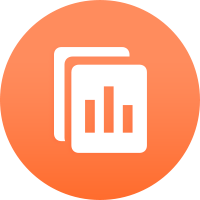
2025-06-25 17:39
IndustriyaHow AI identifies shifting currency correlations
#CommunityAMA
In the dynamic world of forex trading, currency correlations are constantly in flux, influenced by macroeconomic shifts, geopolitical events, and market sentiment. Traditionally, traders analyzed historical data to track correlations between pairs—like EUR/USD and GBP/USD or USD/JPY and AUD/JPY—but such methods often lag behind real-time market movements. Today, AI is revolutionizing this process by detecting shifts in currency correlations as they happen.
Using machine learning and natural language processing (NLP), AI systems can continuously monitor a wide range of data streams—from price action and volume to central bank statements, news headlines, and even social media sentiment. These models learn to recognize patterns and anomalies that indicate when the historical relationship between currency pairs is weakening, strengthening, or reversing.
For instance, an AI model might observe that AUD/USD and NZD/USD, typically correlated due to shared regional and commodity influences, are beginning to diverge. It could then analyze the underlying causes—such as a surprise interest rate move by the Reserve Bank of Australia or a sudden change in New Zealand’s export data—and flag the shift in correlation to traders in real time.
Moreover, AI can adjust its analysis to different timeframes, recognizing that short-term correlations may differ from long-term trends. It also adapts to structural changes in global markets, like rising U.S. debt or China’s evolving trade policy, which can permanently reshape correlations between the USD, CNY, and other major currencies.
This real-time insight allows traders to make better-informed decisions—whether it’s hedging a position, identifying arbitrage opportunities, or avoiding risk from unexpectedly decoupled pairs. Unlike static correlation matrices, AI delivers dynamic, context-aware intelligence.
As forex markets grow more interconnected and complex, AI's ability to identify shifting correlations instantly is becoming an essential edge—transforming reactive analysis into proactive strategy.
Katulad 0
Spil
Mangangalakal
Mainit na nilalaman
Pagsusuri ng merkado
Dogecoin cheers coinbase listing as Bitcoin’s range play continues
Pagsusuri ng merkado
Grayscale commits to converting GBTC into Bitcoin ETF:
Pagsusuri ng merkado
Bitcoin's price is not the only number going up
Pagsusuri ng merkado
Theta Price Prediction:
Pagsusuri ng merkado
How to Research Stocks:
Pagsusuri ng merkado
Bitcoin (BTC), Ethereum (ETH) Forecast:
Kategorya ng forum

Plataporma

Eksibisyon

Ahente

pangangalap

EA

Industriya

Merkado

talatuntunan
How AI identifies shifting currency correlations
 Malaysia | 2025-06-25 17:39
Malaysia | 2025-06-25 17:39#CommunityAMA
In the dynamic world of forex trading, currency correlations are constantly in flux, influenced by macroeconomic shifts, geopolitical events, and market sentiment. Traditionally, traders analyzed historical data to track correlations between pairs—like EUR/USD and GBP/USD or USD/JPY and AUD/JPY—but such methods often lag behind real-time market movements. Today, AI is revolutionizing this process by detecting shifts in currency correlations as they happen.
Using machine learning and natural language processing (NLP), AI systems can continuously monitor a wide range of data streams—from price action and volume to central bank statements, news headlines, and even social media sentiment. These models learn to recognize patterns and anomalies that indicate when the historical relationship between currency pairs is weakening, strengthening, or reversing.
For instance, an AI model might observe that AUD/USD and NZD/USD, typically correlated due to shared regional and commodity influences, are beginning to diverge. It could then analyze the underlying causes—such as a surprise interest rate move by the Reserve Bank of Australia or a sudden change in New Zealand’s export data—and flag the shift in correlation to traders in real time.
Moreover, AI can adjust its analysis to different timeframes, recognizing that short-term correlations may differ from long-term trends. It also adapts to structural changes in global markets, like rising U.S. debt or China’s evolving trade policy, which can permanently reshape correlations between the USD, CNY, and other major currencies.
This real-time insight allows traders to make better-informed decisions—whether it’s hedging a position, identifying arbitrage opportunities, or avoiding risk from unexpectedly decoupled pairs. Unlike static correlation matrices, AI delivers dynamic, context-aware intelligence.
As forex markets grow more interconnected and complex, AI's ability to identify shifting correlations instantly is becoming an essential edge—transforming reactive analysis into proactive strategy.
Katulad 0
Gusto kong magkomento din
Ipasa
0Mga komento

Wala pang komento. Gawin ang una.

Ipasa
Wala pang komento. Gawin ang una.